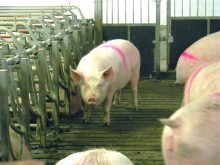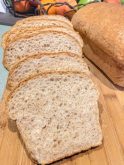Take your iPhone into a supermarket and go up to a product on the shelf. Hold the iPhone next to the bar code on the package and take a picture. Within seconds, a colour – green, yellow or red – comes up on the screen, along with a single-digit number.
The colour tells you how environmentally friendly the product is (green is good, red is bad). The number rates the product’s environmental footprint from one to 10 (the lower the number, the bigger the footprint).
Sounds futuristic? Not at all. It’s already used in the United States and it’ll be here within two years, says Al Scholz.
Read Also

Mazergroup’s Bob Mazer dies
Mazergroup’s Bob Mazer, who helped grow his family’s company into a string of farm equipment dealerships and the main dealer for New Holland machinery in Saskatchewan and Manitoba, died July 6 from cancer.
TECHNOLOGY
Scholz, a Saskatchewan-based management consultant, used that example to show Keystone Agricultural Producers delegates how modern technology helps consumers make purchasing decisions based on environmental and other considerations.
It means farmers will need to be even more conscious about their management practices to satisfy consumer demands, said Scholz.
“The important thing is, consumers are going to have the ability to make an assessment right in the aisle on what product they want to use,” he said after speaking to the KAP annual meeting last week.
“I think it’ll help a lot of farmers be more focused on knowing exactly what they need to do.”
Scholz’s presentation on linking farmers with consumers reflected the KAP conference theme “Bridging the Urban- Rural Divide.”
The above example described by Scholz involves a special iPhone application to access a database developed by a research group out of Berkeley, California. It rates products based on their health, environmental and social impacts.
DATABASE
The database currently evaluates over 75,000 shopping items. The main ones are personal care, household and food products. Pet food, toys and paper products are also rated.
The database is accessible at www.goodguide.com. Although less than two years old, it is expanding rapidly.
Eventually, shoppers will be able to select which products to buy according to their ecobalance ratings, he said.
“The ability to make an assessment on the environment and the impact on society and the social aspect of sustainability shows up in these ratings.”
The ratings are sometimes surprising because products may be either more or less sustainable than people think, Scholz said.
For example, he cited a British study which showed the energy footprint of imported New Zealand lamb meat was only 25 per cent of the footprint for local lamb.
That’s because lamb grown in the mild New Zealand climate requires little energy to produce. As a result, the production costs are much lower. Even shipping the meat thousands of kilometres to the U.K. didn’t change its lower energy input.
Evaluating goods by their footprint is part of a technique called life cycle assessment. LCA assesses the total environmental, social and economic impact of a product all the way through from raw material to production, use and waste disposal.
Scholz said food retailers are adopting LCA because of shoppers’ growing interest in knowing more about what they buy. For example, Safeway and Walmart are developing databases for the products they sell.
But while consumers use real-time IT applications to make food choices, much of agriculture still produces undifferentiated bulk commodities, just as it always has, said Scholz.
“We need to think about what the market wants.”
He said most farmers do a good job of being environmentally responsible. But consumers are interested in how their food is produced and producers must demonstrate what they produce is sustainable, he said. [email protected]


















